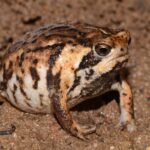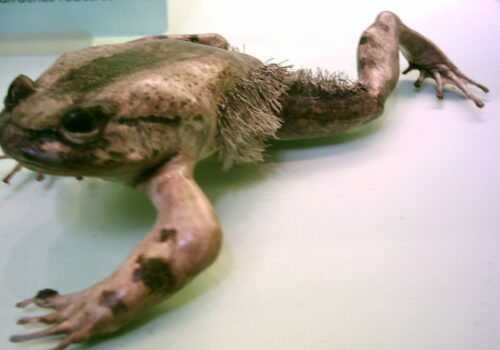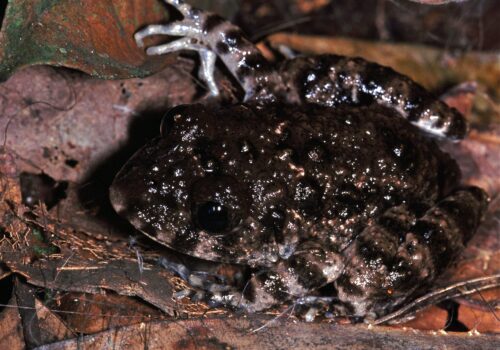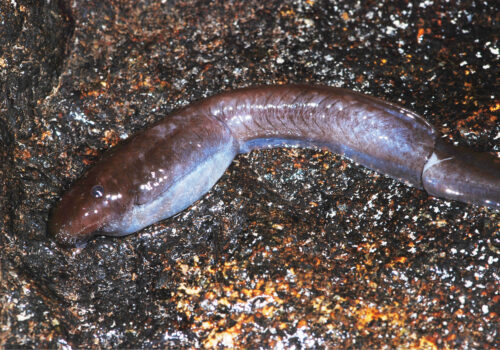Leptopelis yaldeni: Exploring Ethiopia’s Enigmatic Forest Frog#
Nestled within the lush, damp forests of Ethiopia’s highlands, cloaked beneath thick mists and vibrant mosses, lives a creature small in stature yet significant in ecological value—Leptopelis yaldeni. More commonly known as Yalden’s forest tree frog, this beautiful amphibian embodies the delicate balance of tropical mountain ecosystems. With its melodic call resonating through mist-shrouded forests, this frog has come to symbolize the vibrancy—and vulnerability—of East African biodiversity.
Named in honor of acclaimed conservationist D.W. Yalden, whose dedicated contributions to Ethiopian wildlife remain invaluable, Leptopelis yaldeni is more than a species: it is a gentle reminder of how intricately woven life is within these wild reaches. Join us as we embark on a journey into the captivating world of this unique amphibian, exploring its hidden life, fascinating habits, undeniable beauty, and urgent conservation challenges.
Taxonomy and Classification#
Leptopelis yaldeni belongs to the Arthroleptidae family, an engaging and diverse group of frogs typically known as “squeakers” and tree frogs. Within this family, the genus Leptopelis includes species predominant throughout sub-Saharan Africa, characterized chiefly by their arboreal adaptations and melodic vocalizations.
This fascinating species was first officially described in the literature relatively recently, in 2001, by renowned herpetologist Stephen Spawls and colleagues. They distinguished the species based on unique vocalizations, specific morphological features, and specialized ecological habitat preferences. Its closest relatives include other Ethiopian forest-endemic tree frogs, highlighting the ecological uniqueness found throughout these highland ecosystems.
Natural Habitat#
Geographic Range and Distribution#
Leptopelis yaldeni is endemic to the high altitude forest regions of south-central Ethiopia, notably found in the Bale Mountains, a biodiversity hotspot recognized globally. These mountain regions, adorned with thick afromontane forests and lush grasses reaching elevations between approximately 2,000 and 3,000 meters, create an isolated yet nurturing habitat for this sensitive species.
The frog’s distribution is patchy, dependent entirely on specific ecological conditions unique to these high-altitude forests, creating natural “islands” of habitat. Due to this precise distribution and its preference for relatively undisturbed environments, observing this frog in its native setting constitutes a rare privilege, rewarding only the keenest and most patient wildlife enthusiasts.
Preferred Microhabitats#
Within these lush afromontane forests, Leptopelis yaldeni‘s microhabitats include moss-covered branches, thick undergrowth near streams, dense foliage, and ferns. The species is arboreal in nature but descends occasionally closer to wet, streamside habitats during breeding. In these habitats, humidity remains consistently high, a condition essential to the frogs’ delicate and permeable skin.
The forests in which Yalden’s forest tree frog thrives also serve as home to countless other species, including endemic birds, charismatic mammals such as the Ethiopian wolf and mountain nyala, along with innumerable plant and insect species, highlighting the interconnected web of life supported by this specialized habitat.
Physical Characteristics#
With an average adult size ranging between 35 to 45 mm, Leptopelis yaldeni is moderately sized amongst its genus companions. Its appearance is strikingly beautiful yet subtly adapted, exhibiting color variations that blend superbly into the vibrant greens, mottled browns, and shadowy earth tones characteristic of its forest home.
The body structure is streamlined yet robust for climbing, featuring elongated fingers and toes tipped with adhesive pads—adaptations crucial for clinging tenaciously to leaves, branches, and slick, moss-covered surfaces in their arboreal habitat. The frog’s skin has a slightly rough texture, providing additional camouflage against backgrounds of lichen-covered bark and leaf litter.
Coloration varies slightly among individuals, yet predominant hues include shades of olive green, brown, and yellowish-green, often overlaid with subdued markings that assist perfect mimicry in the complex mosaic of forest light and shadows. Large golden eyes with horizontal pupils are particularly striking, offering excellent nocturnal and crepuscular vision ideal for navigating the dimly lit understory habitats.
Behavior and Life Cycle#
Hunting and Feeding Habits#
As stealthy, nocturnal predators, individuals of this species rely heavily on keen sensory perception to capture prey. They feed predominantly upon insects and arthropods—moths attracted by subtle forest blooms, various small beetles, and fleeting flies. Utilizing a tactic of patient ambush, the frogs await prey beneath broad leaves or amongst branches, springing with remarkable speed and accuracy once prey ventures close enough. This behavior illustrates their vital ecological role in insect population regulation.
Mating, Breeding, and Development#
The reproductive cycle of Leptopelis yaldeni remains among its fascinating aspects. During Ethiopia’s wetter months, between June and September, nocturnal vocalizations suddenly intensify within their forested haunts. Males, staking claims on moisture-rich congregation sites near streams and wetlands, commence distinctive advertisement calls, resonant and melodious, intended to attract receptive females and warn competitive males.
Eggs are typically laid on leaves or vegetation overhanging still or slow-flowing water bodies. Once hatched, tadpoles gently drop into the aquatic environment, completing their early life development hidden amidst submerged vegetation or rocky streambeds. Metamorphosis occurs in several weeks, after which juvenile frogs embark upon their arboreal journey, adopting a solitary lifestyle until they reach sexual maturity.
Ecological Role#
Thriving at the heart of Ethiopia’s high-mountain forest ecosystems, Leptopelis yaldeni plays a crucial ecological role. As insectivores, they help maintain populations of numerous insect species, indirectly aiding in plant pollination and propagation by keeping herbivorous insects balanced. Conversely, their modest size positions them as an essential food source for larger predators, including birds, reptiles, and small mammals.
Moreover, their sensitive amphibious nature makes them particularly valuable bio-indicators for environmental health. Decreasing numbers or diminished populations can signal negative environmental changes—such as pollution or climatic shifts—putting the forest ecosystem at risk and alerting conservationists to potential ecological issues.
Threats and Conservation Status#
According to the International Union for Conservation of Nature (IUCN), Leptopelis yaldeni is currently listed as Vulnerable, suggesting that its populations face a significant risk of extinction in the wild. Habitat loss due to agricultural expansion, selective logging, and human encroachment constitutes primary threats. Climate change also presents critical challenges, altering rainfall patterns and temperature regimes vital to their breeding cycles and survival.
Conservation efforts presently focus on habitat protection, specifically within designated national parks and reserves like Bale Mountains National Park. Education and community outreach also play a fundamental part in fostering local collaboration, raising awareness among populations living near critical habitats to recognize and protect their natural heritage.
Cultural and Scientific Significance#
Though not as widely documented as many emblematic fauna species, Leptopelis yaldeni still holds a subtle yet significant cultural symbolism within Ethiopia, representing the vitality and delicate beauty inherent to Ethiopia’s unique mountain forests. Scientifically, the study of this species has helped researchers better understand the region’s biogeography, ecological dynamics, and biodiversity richness, thereby influencing broader ecological and conservation strategies.
Conclusion: Protecting a Treasured Forest Jewel#
In exploring Leptopelis yaldeni‘s captivating traits, complex behaviors, and critical ecological role, we find a profound symbol of Ethiopia’s astounding yet fragile biodiversity. This beautiful amphibian connects ecological health, biodiversity conservation, and community engagement. We must recognize the urgency needed in safeguarding its delicate existence—and indeed, the intricate web of life it represents.
Supporting conservation initiatives, habitat restoration, and deeper education can ensure that Yalden’s forest tree frog continues its mesmerizing calls within Ethiopia’s misty mountain forests, perpetuating an essential ecological legacy and inspiring future generations to treasure and protect our planet’s wild wonders.










